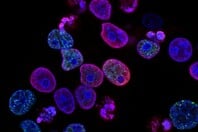@12 http://www.ncbi.nlm.nih.gov/pubmed/23320124Δεν έχω διδακτορικό στην καρκινογένεση από βαφές αλλά το παραπάνω άρθρο συγκρίνει διάφορες επιδημιολογικές μελέτες ως προς την καρκινογένεση και τις βαφές και σε γενικές γραμμές δεν υπάρχει λόγος ανησυχίας. Παραθέτω και την κατακλείδα του άρθρου άμα κάποιος δεν έχει πρόσβαση στο πρωτότυπό ή βαριέται να το διαβάσει ολόκληρο"Hair coloring products have proven to be potent carcinogens in animal models. Epidemiological evidence of hair-coloring products as human oncogenic agents remains largely inconclusive due to mixed results. However, enough evidence exists to help counsel questioning patients.The first step is to explain that epidemiological evidence attempts to calculate risk, but in no way represents direct correlations. With that said, the strongest evidence points toward an increased risk of NHL, especially of the follicular subtype. Patients with a personal or a first-degree family history of NHL should be cautious in utilizing hair dye because there may be a cumulative risk.The studies, for the most part, document that risk is further increased with darker colors and increased number of exposures. Alarming data points toward a link between hair-dye use in pregnancy and the development of several childhood malignancies in offspring. Concerned pregnant women should avoid all hair coloring.Finally, the authors counsel their patients to apply a petroleum-based ointment to the scalp skin prior to hair-dye application to minimize direct cutaneous exposure to the dye. They also advise their patients to reduce the time of dye application by 25 percent for each hair-dying session. Although these methods have not been studied and no known investigation differentiates risk of malignancy based on the time of exposure or the route of chemical administration via cutaneous diffusion, these may be good anecdotal practices for patients who dye their hair."






















